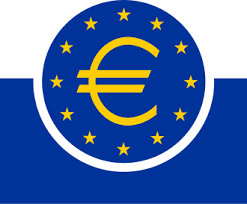European Central Bank also lowers growth forecasts for 2026
The European Central Bank (ECB) has cut interest rates by a quarter of a percentage point for the eighth time in a year, as the bank attempts to support the euro economy after the turmoil caused by US president Donald Trump’s trade war.
The benchmark rate on the deposit facility has been reduced from 2.25% down to 2%, from a high of 4% toward the middle of 2023.
Main refinancing operations, charged when banks can borrow funds from the ECB on a weekly basis, has been cut to 2.15%, from 2.4%, and the marginal lending facility, charged when banks seek overnight credit from the ECB, has been cut to 2.4%, from 2.65%.
The ECB’s governing council said: “In particular, the decision to lower the deposit facility rate — the rate through which the governing council steers the monetary policy stance — is based on its updated assessment of the inflation outlook, the dynamics of underlying inflation and the strength of monetary policy transmission.”
During the press conference, ECB president Christine Lagarde confirmed that the interest rate cut was an “almost unanimous decision.”
One governing council member did not support the decision, however, it was unclear who the member was and whether they wanted to leave rates on hold, or wanted a larger cut.
“We are in a good place, we are well positioned after that 25 point rate cut and with the rate path as it is,” she told the press conference.
“We will face uncertainty. We do not know what the outcome of the negotiations will be between the various partners. As a result we have to be prepared, and we will be assessing meeting-by-meeting.”
The move, which was widely expected, follows a drop in eurozone inflation to 1.9% last month, which slipped below the ECB’s 2% target for the first time since last September.
Core inflation, which strips out volatile food and energy prices, also showed signs of easing — slowing to 2.4% in May, from 2.7% in April, below expectations of 2.5%. On a monthly basis, core prices rose by just 0.1%.
The ECB has also trimmed its forecast for growth across the eurozone next year, predicting gross domestic product (GDP) will rise by 1.1% in 2026, slightly lower than the 1.2% growth forecast in March.
However, it still expects growth of 0.9% this year, and 1.3% in 2027, unchanged from its last forecasts three months ago.
Investors are now pricing in a pause in rate cuts in July, and some conservative policymakers have also advocated for a break to give the bank a chance to reassess uncertainty and the future outlook.
ECB policymaker Robert Holzmann said that “the ECB should pause further interest rate cuts until at least September,” while board member Isabel Schnabel warned of “new shocks posing new challenges” even as disinflation remains on track.
Anatoli Annenkov, Societe Generale economist, said: “Reasons for the ECB to be cautious moving forward relate both to the need for more information on the trade war, and retaliatory measures in particular, and on German fiscal easing.”
It comes as Trump threatened to impose 50% tariffs on European Union (EU) goods last month, stating that the 27-member bloc had been “very difficult to deal with” on trade and that negotiations were “going nowhere.”
He has so far delayed the implementation of the levies from 1 June until 9 July to buy time for negotiations.
Speaking at the Brussels Economic Security Forum on Thursday, Maroš Šefčovič, the EU’s trade commissioner, said the bloc was “absolutely convinced” that a deal between the two powers would be in the best interests of both the US and EU.
He said: “Our global chain especially [is] so intertwined that any obstacle in the middle of the Atlantic would simply make [industries] less competitive and more vulnerable from the perspective of economic security.”
He said the discussions between the EU and US were “diplomatic, political, but also very technical”.
“I am an eternal optimist, and I think we’ve been having our ups and downs… And therefore I think that here [we should] focus on the results, to be patient and to simply have a strategy.
“In the end, we are absolutely convinced that two of the biggest economies, representing 30% of the global trade… [it’s] much better if you can find solutions.”
Traders will be now be focused on the upcoming press conference and the ECB’s latest forecasts.


